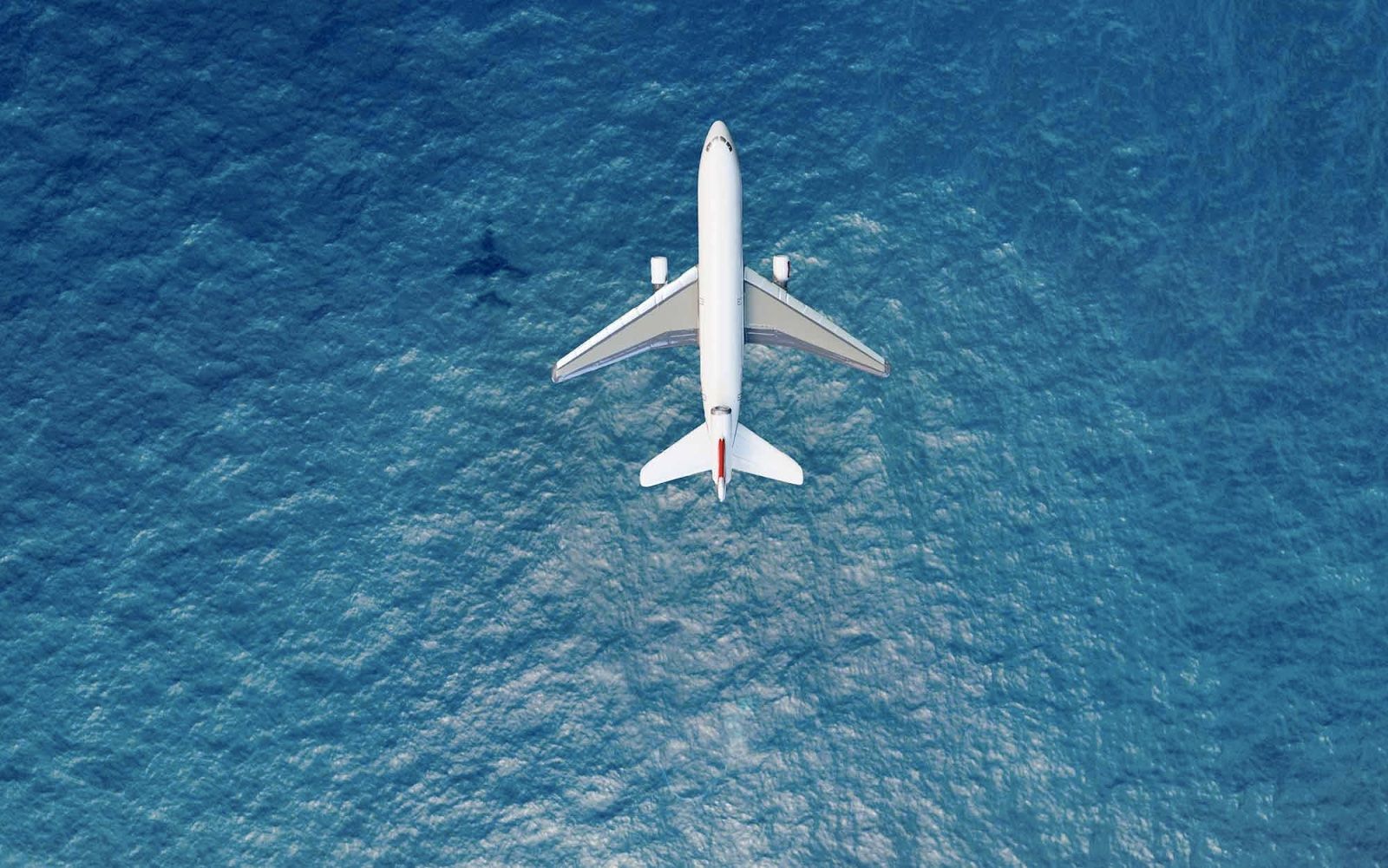Getting hurt while you’re flying somewhere is more than just an inconvenience. There are many ways to suffer an in-flight injury, whether it’s turbulence-related or an intoxicated passenger starting a fight. So, when should someone hurt at an airport or during an in-flight accident consider filing an airplane injury lawsuit? What if you have travel insurance, or aren’t sure who’s legally liable for any injuries sustained while you’re traveling?
Learn the different types of accidents, their causes, and how to handle them if you’re hurt mid-flight. And if you need legal assistance to secure financial compensation for your injuries, we can help with that, too. Keep reading…
Free Personal Injury Evaluation
Weren't at-fault for your accident? Click here to speak with a nearby attorney for FREE about your personal injury claim.
or call (888)-927-3080
Filing an Airplane Injury Lawsuit Against an Airline: Key Takeaways Video
How Frequent Are Aviation Accidents?
Flying is still the safest way to travel, despite some scary and high-profile plane crashes in 2025. From 2020 to 2024, there was approximately one accident for every 810,000 flights, on average. If you get on a flight tomorrow, you have a .06% chance of dying in a crash.
Common Reasons Why Injured Passengers May File an Airplane Injury Lawsuit
Here are a few common injuries and ailments that can happen anytime you fly on a private or commercial airline.
Flight-Related Injuries and Illnesses
- Broken bones
- Smoke inhalation and burns sustained during airplane crashes
- Circulation-related health problems, like deep vein thrombosis (DVT) or pulmonary embolism
- Bruises, cuts, and physical pain from soft tissue injuries
- Emotional distress caused by missed connections, turbulence, flight delays, and in-air accidents
Situations That Can Easily Injure Airline Passengers
- Luggage falling out of overhead bins. Instances of luggage falling out of overhead bins during turbulence or due to improper storage can lead to injuries such as head trauma, bruises, and even broken bones.
- “Acts of God” and turbulence. Turbulence, often categorized as an “Act of God,” can seriously injure passengers and flight crew alike. From 2009 to 2018, the National Transportation Safety Board found turbulence caused 123 serious injuries (38% of aviation accidents).
- Failing to wear a seat belt as directed by the flight’s pilot or crew. Not wearing a seat belt caused most of the 34 serious turbulence-related passenger injuries reported from 2009 to 2022.
- Slipping & falling at the airport. Fall accidents at the airport due to wet floors, inadequate signage, or obstacles can lead to serious injuries. Knowing who’s liable, however, isn’t always clear: Is it the TSA, or the city that owns the airport itself, or a specific airline? This is one of the many reasons why personal injury attorneys offer a free consultation to review your case.
- Injuries from unsecured food and beverage carts. Failing to lock down food and beverage carts can result in cuts, bruises, and even broken bones for anyone caught in their path.
Important: While in-flight fights are rare, if another passenger assaults you, the airline probably isn't responsible, according to recent court rulings.
Passenger vs Plane: When are Airlines Liable for Injuries on Flights?
Generally, if an airline is negligent, then they are solely legally responsible for causing a passenger’s injury. But if the passenger was negligent in some way, then the airline has no legal obligation to pay any damages. However, determining liability in personal injury cases isn’t always easy.
There are plenty of examples where neither the airline nor passenger is technically at fault, resulting in a legal stalemate. Here are a few examples that can illustrate who may be held liable when filing an airplane injury lawsuit.
Injuries that Happen While Ignoring the Seat Belt Sign
If a passenger refuses to wear a seat belt as required by airline staffers, any resulting injuries are solely the passenger’s fault. That’s especially true if the seat belt sign was lit at the time the injury occurred.
Injuries that Result from Pilot Failing to Turn on the Seat Belt Sign
If the pilot doesn’t turn the seat belt sign on and encounters turbulence, what happens if it injures someone? The answer isn’t as obvious as you might think.
First, it’s unlikely any experienced pilot would take that course of action. That’s especially true on commercial flights, since the FAA requires random drug and alcohol tests for all aviation staff.
However, planes do encounter what’s known as clear-air turbulence (CAT). These weather streams can catch even the most seasoned pilots off-guard and lead to fatal crashes. This is why pilots often keep seat the fasten belt signs on for the entire flight. Taking this step helps protect major airlines from liability when passengers file injury claims.
Injuries from Flight Attendants Moving Carts at the Wrong Time
Flight attendants should use food and drink carts only once the plane reaches cruising altitude. At most, they can push a cart during minor turbulence. However, they must return all food and drink carts once the fasten seat belt sign comes on.
If for some reason a flight attendant ignores such warnings, they may become liable for any injuries that occur. Of course, these types of injury events are rare. Also, a sudden jolt from unexpected turbulence leading to a food cart injury is not the airline’s responsibility.
Plane Crash or Emergency Landing Injuries
Survivors of a crash or emergency landings can file an airplane injury claim as long as they can prove negligence on the airline’s behalf. In some cases, negligence is obvious. The tragic losses of Lion Air Flight 610 and Ethiopian Airlines Flight 302 are examples of this. Both flights involved Boeing 737 MAX planes, plagued by a secret design flaw.
Boeing, charged with criminal conspiracy, agreed to pay a $2.5 billion settlement, including financial compensation for the victims’ families. Horrific instances like these are solely the airline’s legal responsibility, or “liability” in legal jargon.
However, other cases are different. Consider, for example, the famous Miracle on the Hudson. Now considered a hero, retired pilot Capt. Chesley (“Sully”) Sullenberger III landed a U.S. Airways plane safely on the Hudson River in 2009. Some passengers on Sully’s flight sustained injuries, but no deaths.
Negligence wasn’t a factor in that accident, though. A flock of geese flew into the plane’s engines (commonly referred to as a “bird strike”), forcing the pilot to make an emergency landing. In that example, the airline voluntarily issued $5,000 to each passenger for lost luggage.

Steps to Take If You’re Seriously Injured on a Commercial Flight
If you suffer serious injuries while flying, immediately notify the flight crew and seek medical attention. The flight crew’s goal is to protect passengers, and they will either try to render in-flight care or divert to a nearby airport so you can receive emergency treatment.
Here’s how the National Transportation Safety Board defines “serious injury“ for people considering filing airplane accident cases:
- Broken bones
- Second or third-degree burns, or any burn that covers more than 5% of your body’s surface area
- Any injury that requires hospitalization for more than 48 hours within 7 days after your flight
- Damage to any internal organ
- Any airline injury that results in death within 30 days of your accident
If any of the above describes your injury, follow these steps to file your airplane injury lawsuit and recover compensation for your losses.
1. Document Your Injury & Gather Witness Information to Support Your Airplane Injury Claim
Without evidence of what happened, you won’t have a valid airplane injury lawsuit. Don’t wait until you’re off the flight or out of the airport to say something and start gathering evidence:
- Tell a flight attendant or the closest airport worker that you’re injured
- Photograph your injury as well as the surrounding area
- Write down what caused your injury to happen (i.e., puddle of water, turbulence, another passenger striking you)
- If any witnesses saw the incident happen, ask for their names and contact information
- File an incident report (the nearest airline or airport employee should provide you with this form)
Fill any forms they give you out, sign them, and ask for a copy for your own personal records.
If you’re hurt mid-flight, contact Customer Service to report the incident and create a paper trail. You can do this in person at the airport, over the phone, by email, or through the airline’s website.
2. File a Claim With Your Travel Insurance Provider (If You Have Coverage)
If you have travel insurance, you have some financial protection from airport injuries. Your policy should cover your medical expenses, plus to any other costs to get you home if you experience an injury on an aircraft. To make a claim on your travel insurance, follow these steps:
- Contact your insurer
- Provide documentation of your injury
- Complete all relevant claims forms
- Submit your claim
3. Examine the Airline’s Contract Of Carriage
If you don’t have travel insurance or it won’t cover all your losses, you may wish to file an airplane injury lawsuit. Before you get an initial consultation from a nearby personal injury attorney, review the airline’s contract of carriage. A contract of carriage is the agreement between a passenger and the company transporting them to their destination. This contract may help you understand the airline’s duty of care and whether they breached that duty through negligence.
In addition, the two laws below outline liability on a commercial airline’s behalf if injury, death, or loss of personal property occurs during a flight.
Warsaw Convention (1929)
The Warsaw Convention is the first international treaty to establish best practices and rules for airlines to follow when an in-flight injury, crash, death, or luggage loss occurs during international flights.
- Lost luggage liability caps at 250 gold francs per kilogram of checked baggage ($18.59 USD per pound).
- Liability for loss of life caps at $125,000 gold francs ($20,721 USD).
Montreal Convention (1999)
The Montreal Convention made significant updates to Warsaw Convention’s regulations (and not just to the 70-year-old max payout amounts). Rather than set a hard number for maximum liability payments, the Montreal Convention set payouts based on Special Drawing Rights (SDRs). An SDR is an international reserve asset that acts as a claim on the freely usable currencies of International Money Fund (IMF) members.
The SDR limits are as follows, depending on your claim type:
| Article | Original SDR Limits (1999) | December 2009 SDR Revised Limits | December 2019 SDR Revised Limits |
|---|---|---|---|
| Article 21 – Passenger bodily injury / death | $100,000 | $113,100 | $128,213 |
| Article 22 (1) – Passenger delay | $4,150 | $4,694 | $5,346 |
| Article 22 (2) – Baggage loss, damage or delay | $1,000 | $1,131 | $1,288 |
| Article 22 (3) – Cargo loss, damage or delay | $17 per kg. | $19 per kg. | $22 per kg. |
The Montreal Convention also establishes a strict liability system where the court presumes an airline is liable unless proven otherwise.
5. Have Your Legal Team Send a Demand Letter to the Airline
Before filing suit, you can send a demand letter to try to resolve your dispute directly with the aircraft carrier. Some case types and jurisdictions require you to send a demand letter first before you can file a lawsuit against airline carriers.
6. File Your Airplane Injury Lawsuit in Court
If the demand letter you send doesn’t resolve the issue, can proceed to seek compensation through a lawsuit in court.
However, you’ll first need to determine which court has jurisdiction over your claim. The most likely place you’ll need to file will be in the country, state, or county where your flight:
- Took off
- Landed
- Had a significant connection
Let LegalASAP Connect You With an Airplane Injury Lawyer for a Free Consultation Today
Especially for passengers on international flights, knowing where or how to file your injury claim isn’t always clear. That’s where getting a free initial consultation from a nearby personal injury attorney can be especially helpful.
Don’t leave it to chance and hope your travel insurance policy covers your damages. If you or someone you love is seriously injured or killed on a flight, let LegalASAP connect you with a free consultation today. The law will always side with a passenger when an airline’s negligence jeopardizes their safety.
Need help finding a qualified personal injury lawyer to evaluate your case and answer your questions for free? Fill out this evaluation form so we can connect you with someone in your area right away.
Lori Polemenakos is Director of Consumer Content and SEO strategist for LeadingResponse, a legal marketing company. An award-winning journalist, writer and editor based in Dallas, Texas, she's produced articles for major brands such as Match.com, Yahoo!, MSN, AOL, Xfinity, Mail.com, and edited several published books. Since 2016, she's published hundreds of articles about Social Security disability, workers' compensation, veterans' benefits, personal injury, mass tort, auto accident claims, bankruptcy, employment law and other related legal issues.


